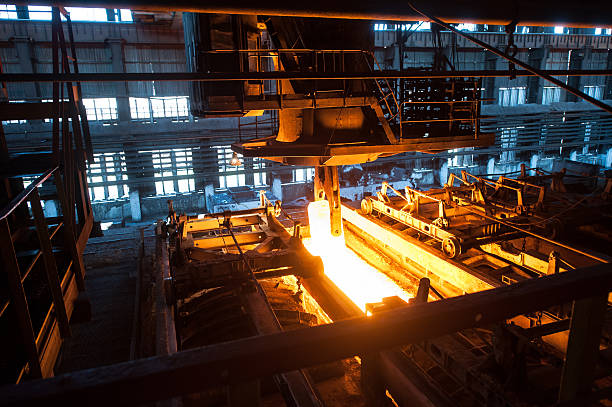Table of Contents
Steel is a vital component in modern infrastructure, shaping the societal structure from skyscrapers to bridges due to its versatility and strength.
The Historical Evolution of Steel Supply
Steel production has evolved significantly throughout history, starting with ancient times and gaining momentum during the Industrial Revolution. Advancements like the Bessemer Process made steel more accessible, enabling the rise of cities, railways, and bridges. Today, steel production is more efficient and environmentally friendly.
Modern Production Techniques of Steel
Steel production has evolved with advanced technologies, including Basic Oxygen Steelmaking (BOS) and Electric Arc Furnace (EAF). BOS uses blast furnace molten iron to reduce carbon content, while EAF uses electricity to melt recycled steel scrap. These methods minimize waste and emissions, contributing to sustainable infrastructure development.
Applications of Steel in Infrastructure
Steel&8217;s versatility and strength make it a critical material in various infrastructure applications. In construction, steel is used extensively in building frameworks, ensuring stability and durability for skyscrapers, residential buildings, and commercial complexes. Its high strength-to-weight ratio allows for more slender and innovative designs without compromising structural integrity. Additionally, steel is a key component in bridges, offering resistance to dynamic loads and environmental factors. It also plays a vital role in the production of pipelines for transporting water, oil, and gas, providing reliability and longevity. In transportation, steel is used to manufacture rail tracks, automotive bodies, and ship hulls. The adaptability of steel in different forms, such as structural steel, rebar, and sheet steel, underlines its indispensability in contemporary infrastructure.
Economic Impact of Steel Supply
The steel industry significantly influences the global economy, providing millions of jobs and contributing to various sectors. As a foundational element of the construction and manufacturing industries, a stable steel supply chain is essential for economic growth and development. Economies rely on the consistent production and distribution of steel to sustain infrastructure projects, which in turn, stimulate job creation and economic activity. Moreover, the export of steel and steel products generates substantial revenue for producing countries, bolstering their trade balance. The interconnected nature of the steel supply chain, from mining and production to distribution and construction, highlights its role in supporting diverse industries. Thus, the economic implications of steel supply extend beyond mere production, influencing global economic stability and growth.
Environmental Considerations in Steel Production
As environmental concerns gain prominence, the steel industry faces increasing pressure to adopt sustainable practices. Traditional methods of steel production emit significant amounts of carbon dioxide, contributing to global warming. However, the industry is making strides in reducing its environmental footprint. Innovations such as carbon capture and storage (CCS), energy-efficient technologies, and the use of renewable energy sources are being implemented to lower emissions. The focus on recycling also plays a crucial role, with steel being one of the most recycled materials in the world. Recycling steel reduces the need for raw materials, cuts down on energy consumption, and minimizes waste. Sustainable steel production practices are essential not only for environmental conservation but also for ensuring the industry&8217;s long-term viability in a world increasingly focused on green initiatives.
Future Trends in Steel Supply and Infrastructure
Looking forward, the steel industry is poised to embrace innovations that will shape the infrastructure of the future. Advances in materials science are leading to the development of new steel alloys with enhanced properties, such as improved strength, corrosion resistance, and reduced weight. These innovations will enable the construction of more durable and sustainable structures. The integration of smart technologies, like the Internet of Things (IoT) and artificial intelligence (AI), is revolutionizing production processes, making them more efficient and adaptable. Furthermore, the push towards circular economy principles will likely see a continued emphasis on recycling and resource optimization. As infrastructure demands evolve with urbanization and technological advancements, the steel supply industry will play a pivotal role in meeting these challenges and opportunities, ensuring resilient and forward-looking infrastructure development.
